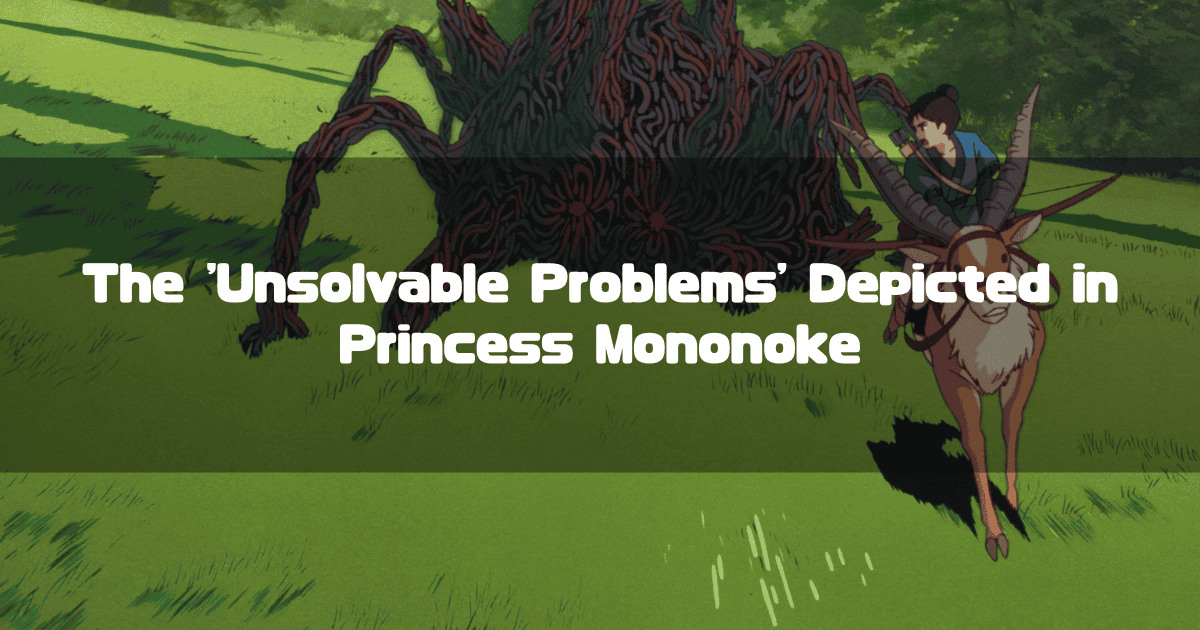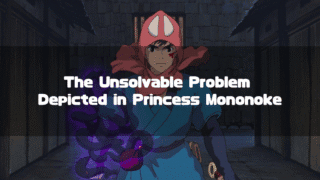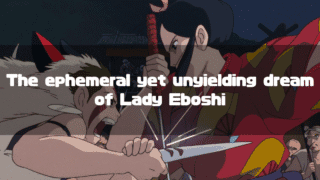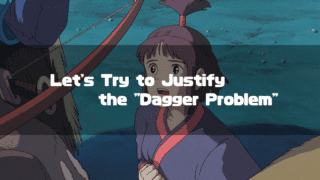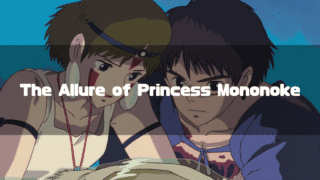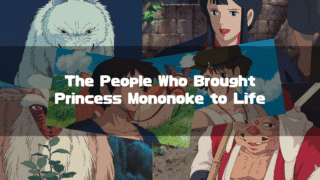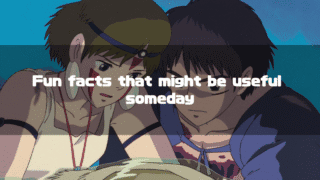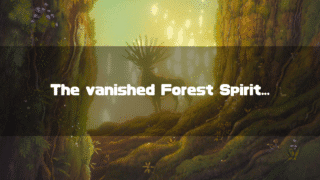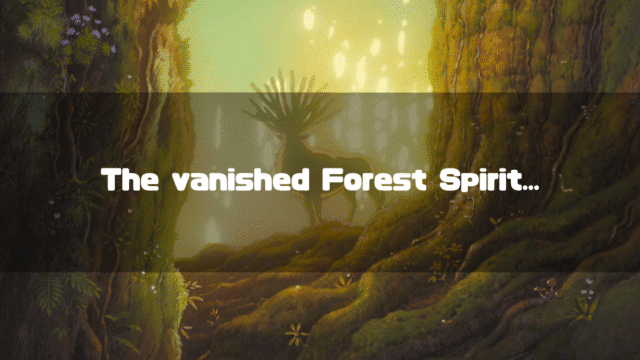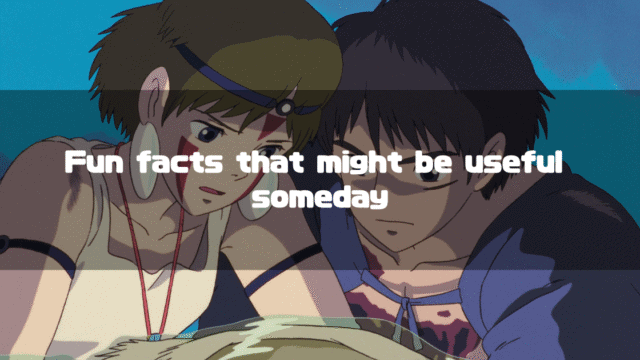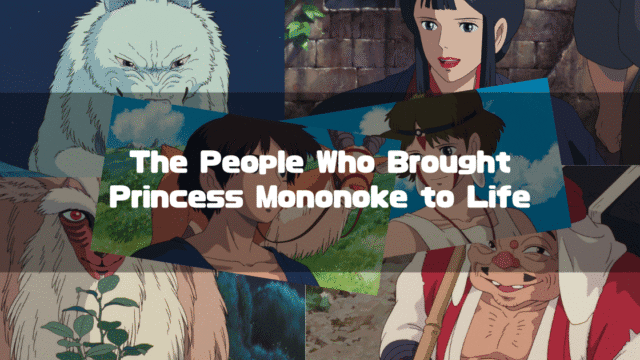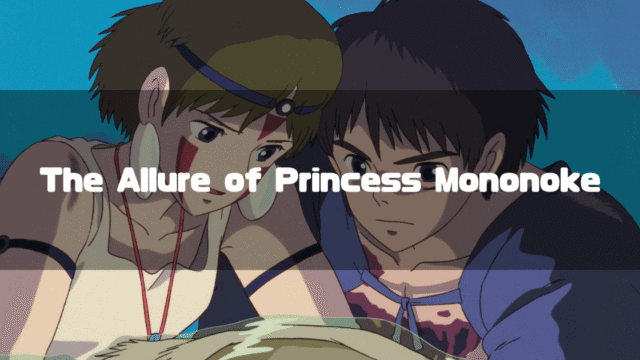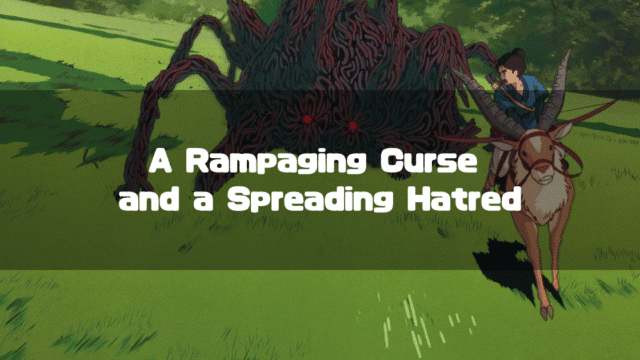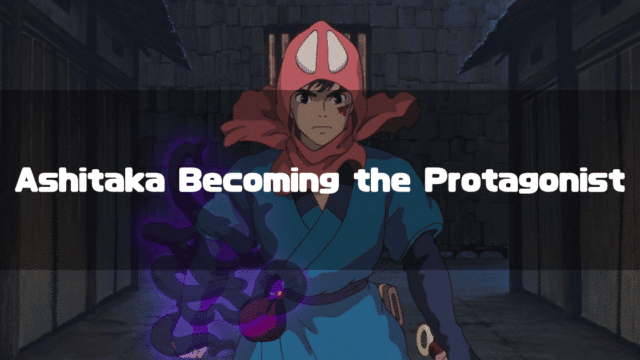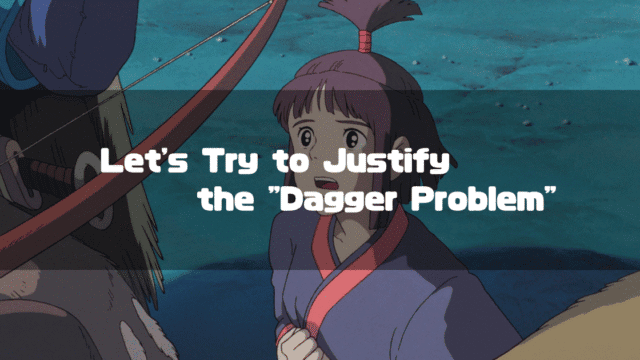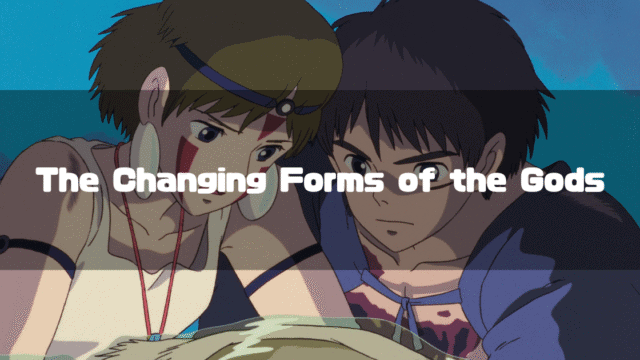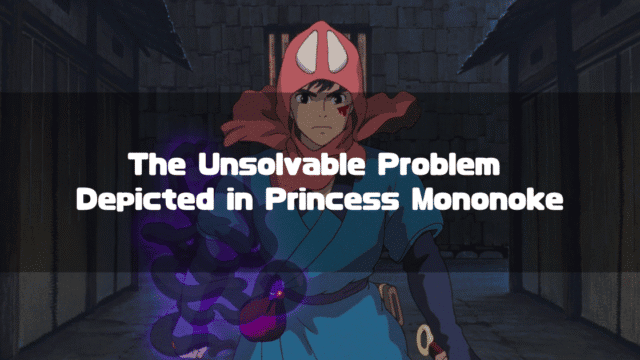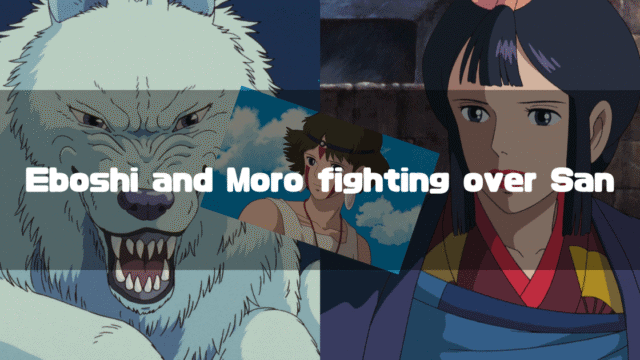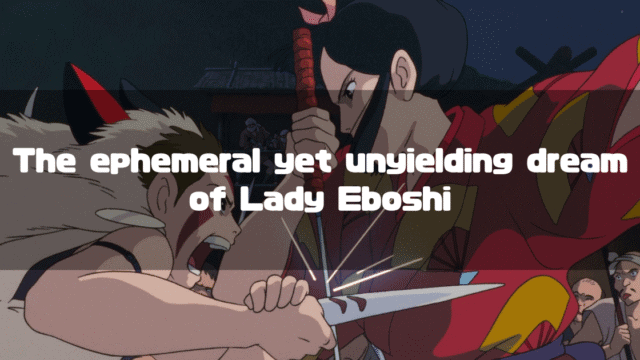Princess Mononoke(Official Studio Ghibli Website) is an animated film directed by Hayao Miyazaki, released in 1997.
This time, I want to explore the “Godzilla-like aspects” within the movie Princess Mononoke, and ultimately consider why the bruise on Ashitaka’s right arm never completely disappeared.
A key hook is the similarity between Dr. Serizawa’s eyepatch in the original Godzilla and Ashitaka’s bruise.
First, let’s look back at the “absurdity” and “unsolvable problems” that form the premise of the Princess Mononoke story.
*While Godzilla is mentioned frequently below, I am primarily referring to the original Godzilla released in 1954.
*This article is an English translation of the original Japanese article, 【もののけ姫】宮崎駿版「ゴジラ」としての側面とアシタカの痣が消えなかった理由を考察.
Let an AI walk you through the highlights of this post in a simple, conversational style.
-
Princess Mononoke as Hayao Miyazaki’s Version of Godzilla
The demon (Tatarigami) in Princess Mononoke is a symbol of an “unstoppable disaster” that, while born from human actions, attacks senselessly, closely resembling Godzilla from the original film. From the underlying themes of “absurdity” and “unsolvable problems,” Princess Mononoke can be seen as Hayao Miyazaki’s reinterpretation of Godzilla. -
Ashitaka and Dr. Serizawa—The Similarity of Their “Absurd Scars”
The bruise on Ashitaka’s right arm, received from a curse, overlaps with the eyepatch worn by Dr. Serizawa in the original Godzilla, a wound from the war. Both are symbols of senseless “absurdity,” depicted as manifestations of a hidden destructive impulse, and they even share the circumstance of losing their fiancées. -
The Reason Ashitaka’s Bruise Didn’t Disappear
The bruise remained as a symbol of the “unsolvable problems” that will never vanish from this world. However, it can also be seen as an antithesis to Dr. Serizawa, who chose death. It represents Miyazaki’s message to “survive, even with an absurd wound,” entrusting Ashitaka with the future that Serizawa gave up on.
Princess Mononoke as Hayao Miyazaki’s Version of Godzilla
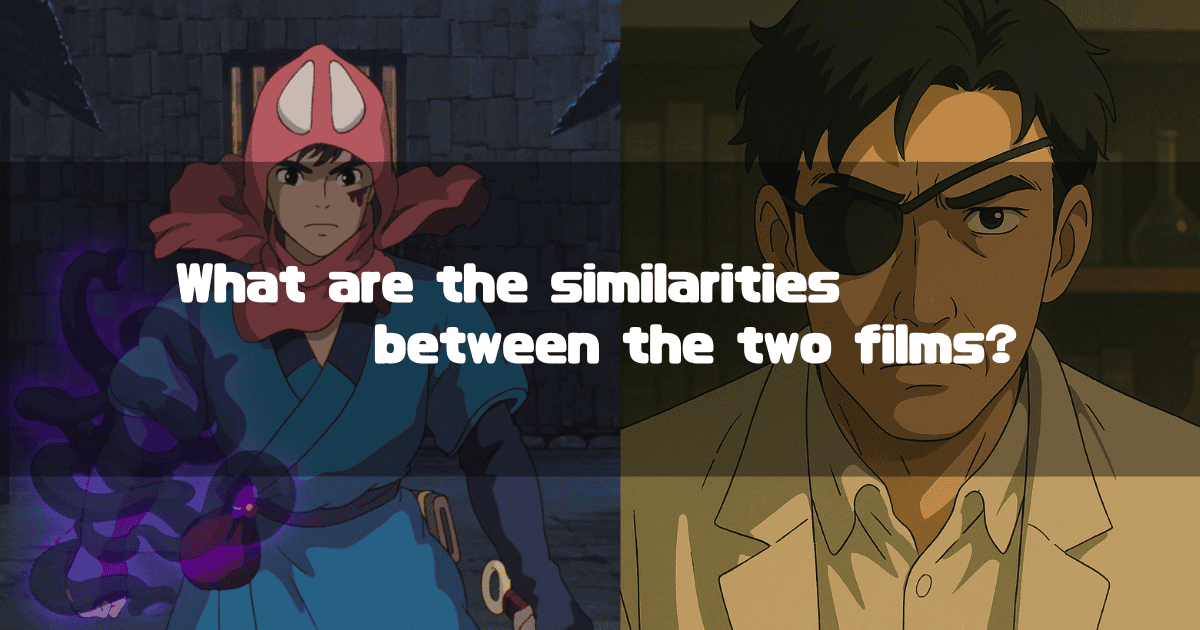
The Curse as a Symbol of “Absurdity” and “Unsolvable Problems,” and the People Who Strive to Live
The story of Princess Mononoke begins with sheer “absurdity.”
Ashitaka’s village is attacked by a demon for no particular reason, and Ashitaka, who should be a hero for defeating it, is exiled due to “custom.”
Despite being dealt an “absurdity” that would make anyone want to scream, Ashitaka leaves his home with a broad smile for his fiancée, Kaya, who sees him off.
This act of living while embodying contradictory qualities of “absurdity” and a “broad smile” is common to all characters in Princess Mononoke, and I believe depicting people striving to live this way is a key theme of the film. I’ve summarized this in the following article:
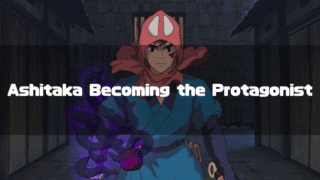
And can our society eliminate such “absurdity”?
The “absurdity” depicted in Princess Mononoke is a manifestation of “things beyond our control,” such as innate qualities, birthplace, or natural disasters like earthquakes. Perhaps technological advancements might one day eliminate some “absurdities,” but if that happens, it will likely just become a question of “should we eliminate it with technology?” The concept of “designer babies” makes this easy to understand.
In other words, we can recognize the “absurdity” that exists in this world, but we cannot offer a fundamental “solution” for it. Conversely, if a definitive “solution” could be presented, it would no longer be called “absurdity.”
Therefore, depicting “absurdity” simultaneously presents an “unsolvable problem.” This is likely why the end of Princess Mononoke doesn’t feel like a true conclusion. It depicted something unsolvable.
And when I think of keywords like “absurdity” and “unsolvable problems,” I can’t help but remember Godzilla.
Godzilla and “demon” as Symbols of “Unstoppable Forces”
Godzilla is a “kaiju film” released in 1954, and new installments are still being produced today.
The explanation for Godzilla’s monstrous form and immense power varies slightly between films, but for the original Godzilla, it’s generally understood that it was “a creature from the Jurassic to Cretaceous period that survived to the present day, was driven from its habitat by repeated hydrogen bomb tests at Bikini Atoll, and gained its monstrous form and power from radiation.”
So, fundamentally, the original Godzilla is a symbol of the “fear of the atomic bomb,” and in that sense, it can be called an “anti-nuclear” and “anti-war” film.
On the other hand, an important element in discussing Godzilla is that “it’s never clearly explained why Godzilla comes to Japan.”
This is the case in the original Godzilla, and it seems that works that inherit the spirit of the original, such as The Return of Godzilla (1984), Shin Godzilla, and Godzilla Minus One, generally follow this pattern.
And regardless of the reason, we are forced to deal with the threat of Godzilla. Moreover, this response is extremely difficult, and we always manage to repel Godzilla by the skin of our teeth, suffering great losses.
While the existence of Godzilla is indeed a symbol of the “fear of the atomic bomb,” it ultimately seems to be expressed as a “symbol of disasters beyond our control,” like earthquakes and typhoons.
And when looking at Godzilla in this way, isn’t it fair to say that the “demon” in Princess Mononoke was an existence that could be called Godzilla itself?
The “demon” in Princess Mononoke had the following characteristics:
- The “demon” was created by human actions (the Ishibiya stone-thrower/firearm).
- The reason the “demon” attacked Ashitaka’s village cannot be explained.
- Although the “demon’s” creation is a result of humanity’s own doing, it must be eliminated as a “disaster that befalls us.”
- However, after eliminating the “demon,” a mound is built to enshrine it.
The “Ishibiya” could be reinterpreted as a “hydrogen bomb,” and like Godzilla, its arrival is inexplicable. The act of “building a mound to enshrine it” implies a “sense of guilt” for eliminating the “demon.” As is prominent in the original Godzilla and The Return of Godzilla (1984), an inexplicable “sense of guilt” remains after eliminating Godzilla.
Thus, I don’t think it’s too strange to see the “demon” as Miyazaki’s version of Godzilla.
And when considering the fundamental question of this article—”why Ashitaka’s bruise remained”—I am reminded that there is a character in the original Godzilla who suffered a similar “absurdity.”
Dr. Serizawa of the Original Godzilla and His “Wound”
In the original Godzilla, there is a key character named Dr. Serizawa (Daisuke Serizawa). Although not the so-called “main character,” Serizawa, an extremely brilliant scientist, ultimately succeeds in destroying Godzilla with his invention, the “Oxygen Destroyer.” However, during the operation, Serizawa decides of his own will to share his fate with Godzilla.
This Dr. Serizawa, however, lost his right eye in the war and always wears an eyepatch.
Moreover, Serizawa’s tragedy does not end there.
Serizawa has a mentor, Dr. Yamane, and was in a situation where he was publicly seen as the “fiancé” of Yamane’s daughter, Emiko. Although the details are not clear from watching the original Godzilla, it seems they would have married if nothing had happened.
However, in the film, Emiko has a lover named Hideto Ogata (the protagonist) and treats Serizawa completely as a “friend.” And Ogata says the following in the film:
“I know I shouldn’t hesitate, but when I think of Serizawa, I lose my nerve. If it hadn’t been for the war, he never would have suffered that terrible wound.”
Do you understand what Ogata is trying to say? Ogata is claiming that he “stole Emiko from Serizawa.” Moreover, he did so by taking advantage of Serizawa’s “disadvantage.”
Considering Emiko’s life, it was good that she could be with the man she loved, and good that she avoided an unwanted, de facto marriage with Serizawa (though she probably liked Serizawa as a person, marriage and romance were different matters). In that sense, Ogata has nothing to feel guilty about, but he was likely aware of Serizawa’s feelings for Emiko.
However, when one considers Serizawa’s perspective, it’s an incredibly painful situation. In other words, Serizawa:
- Was a promising and brilliant researcher,
- Had a de facto fiancée named Emiko,
- Lost his right eye in the war,
- Partly because of that, he tried to distance himself from Emiko,
- And was then confronted with the reality that Emiko had become intimate with a man named Ogata.
Losing his right eye was a huge blow, and he also lost the woman he loved. It’s no wonder he created the “Oxygen Destroyer.” The post-war world he lived in was not a very hopeful one for him.
In other words, the “Oxygen Destroyer” is a symbol of the destructive impulse within Serizawa’s heart, and in fact, the very existence of Godzilla can also be seen as representing Serizawa’s destructive impulse. Godzilla was Serizawa’s alter ego.
However, Serizawa becomes aware of this destructive impulse within himself and the end of his love for Emiko, and using the “Oxygen Destroyer” he developed, he commits a double suicide with Godzilla.
He sealed away his “hatred” along with Godzilla.
What do you think? Don’t you feel a similarity with the “demon” and Ashitaka in Princess Mononoke?
Ashitaka’s Bruise and Dr. Serizawa’s Eyepatch
Dr. Serizawa’s eyepatch symbolizes the “scars of war,” but there is no reason why Serizawa himself should be the one to bear that symbol. The outbreak of the war and the wound he received because of it are entirely “absurd.”
And this shows a striking similarity to the curse Ashitaka received and the bruise left on his arm.
A similarity can also be seen from the perspective of “destructive impulse.”
When Ashitaka visits Irontown, he is told by Lady Eboshi that she was the one who shot Nago no kami with the Ishibiya. In that scene, Ashitaka’s right arm goes wild, drawing his sword and attempting to strike Lady Eboshi. Ashitaka and Lady Eboshi then have the following exchange:
What did you all think of this scene? Many of you probably thought, “The grudge of Nago no Kami dwelling in Ashitaka’s right arm tried to kill Lady Eboshi who was right in front of him.”
However, considering Ashitaka’s suffering, isn’t it more natural to see it as “Ashitaka tried to kill Eboshi using the ‘power of the curse’ as a reason, but managed to suppress it with his strong rationality“?
In other words, the bruise left on Ashitaka’s right arm is certainly a symbol of the curse, but it can also be seen as a manifestation of his destructive impulse after receiving an “absurd wound”.
“Ashitaka’s bruise” and “Dr. Serizawa’s eyepatch” can be seen as the same in the sense that they symbolize that “destructive impulse.”
If we recall the beginning of Princess Mononoke, just as Serizawa lost Emiko, Ashitaka lost Kaya. Isn’t it a remarkable similarity?
A Consideration of Why Ashitaka’s Bruise Did Not Disappear
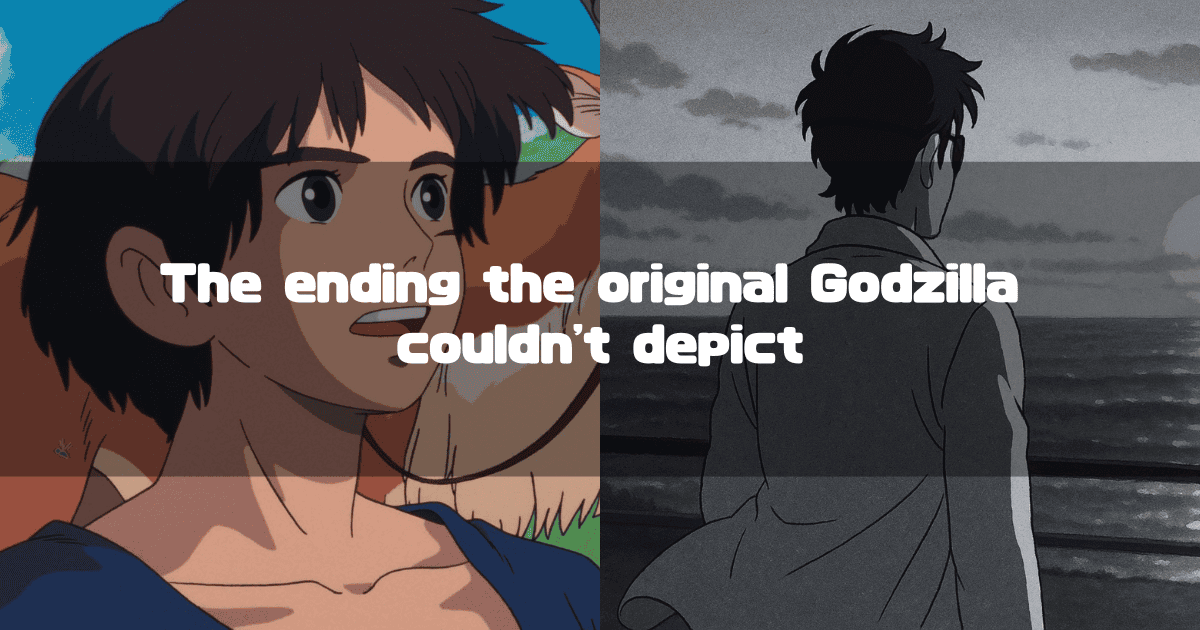
A Tangent: The Little Mermaid and Ponyo
This is a slight digression, but I want to look back at Ponyo on the Cliff by the Sea.
In an interview published in Ghibli Textbook 15: Ponyo(ジブリの教科書15 崖の上のポニョ, in Japanese), director Miyazaki says the following:
“When I was nine, I read Andersen’s The Little Mermaid. In that story, the little mermaid turns into foam at the end because she has no soul. I just couldn’t accept that, and even now, I feel like I can’t forgive that kind of Christian thinking.
~Omitted~
So this time, I thought I would try to depict that kind of love with a happy ending. Whether it’s a happy ending or not might be perceived differently by each viewer, though.”(Original Text in Japanese)
「九歳の時にアンデルセンの『人魚姫』を読んだんです。あの話は、最後に人魚姫は魂がないからと言って、泡になってしまうでしょう。それがぜんぜん納得できなくて、いまだああいうキリスト教的な考え方は許せない気がしていたんです。 ~中略~ だから今回はそういう愛をハッピーエンドとして描いてみようと思いました。ハッピーエンドかどうかは見る人にとって受け取り方は違うでしょうけれども」
As the interview above states, at the end of Ponyo on the Cliff by the Sea, Ponyo does not dissolve into foam but ends up with Sosuke.
I don’t mean to claim that Hayao Miyazaki habitually makes such “ending alterations,” but it is a fact that there is at least one example.
And didn’t Hayao Miyazaki do the same thing in Princess Mononoke?
Why Did Ashitaka’s Bruise Remain? – Daisuke Serizawa Who Never Left –
The Fate of the Theme of “Unsolvable Problems”
One reason Ashitaka’s bruise remained is, of course, because it was a symbol of the “unsolvable problems” that is one of the themes of Princess Mononoke.
Ashitaka’s bruise is a symbol of “absurdity,” and if it were to disappear at the end, it would result in a foolish and irresponsible ending like, “I don’t know why, but it got better after I tried hard!” If that were the case, he shouldn’t have depicted “unsolvable problems” in the first place.
The fact that Ashitaka’s bruise still faded is likely Hayao Miyazaki’s wish for the future. Didn’t Miyazaki appeal to us, saying, “We can’t see a solution right now, but maybe one day we can solve it. And let’s believe in that and live life to the fullest“?
A Redo of the Original Godzilla
If we think of Ashitaka’s bruise as “not disappearing,” it’s unfortunate, but if we think of it as “fading,” we can see a slight hope, as mentioned above.
And when we consider the “similarity between Ashitaka and Dr. Serizawa,” that “hope” appears more like a strong “assertion.” In other words,
Serizawa! Why did you have to die! Why did you give up on this world! You should have survived! I won’t kill Ashitaka! I will show Ashitaka the future you gave up on!
is what it seems to be saying. Of course, this is my own speculation, and there are no statements from Hayao Miyazaki to support this. Rather, it is a deeply personal thought of mine.
However, I believe I have explained in this article the necessity of considering such a thought.
It’s not good to speculate on Hayao Miyazaki’s thoughts, but considering what I’ve written in this article, perhaps you can enjoy both the original Godzilla and Princess Mononoke from a different perspective.
I believe so. That is all!
The images used in this article are from the Studio Ghibli Still Images collection.
About the Author
Recent Posts
- 2025-10-21
Indiana Jones and the Dial of Destiny(2023): Full Synopsis & Analysis: Indy’s True Motive and the Enigma of Helena - 2025-10-15
Indiana Jones and the Dial of Destiny(2023):Historical Background-WWII, the Real Dr. Schmidt, the Siege of Syracuse, and the Antikythera Mechanism - 2025-10-08
Why Does Children Who Chase Lost Voices Feel So Ghibli-esque? [Makoto Shinkai’s “Tale of Farewell”] - 2025-10-07
5 Centimeters per Second: Characters, Voice Actors, Character Analysis and Character Map - 2025-10-06
5 Centimeters per Second: Full Synopsis, Analysis, Ending Explained & Character Map (Spoilers)

